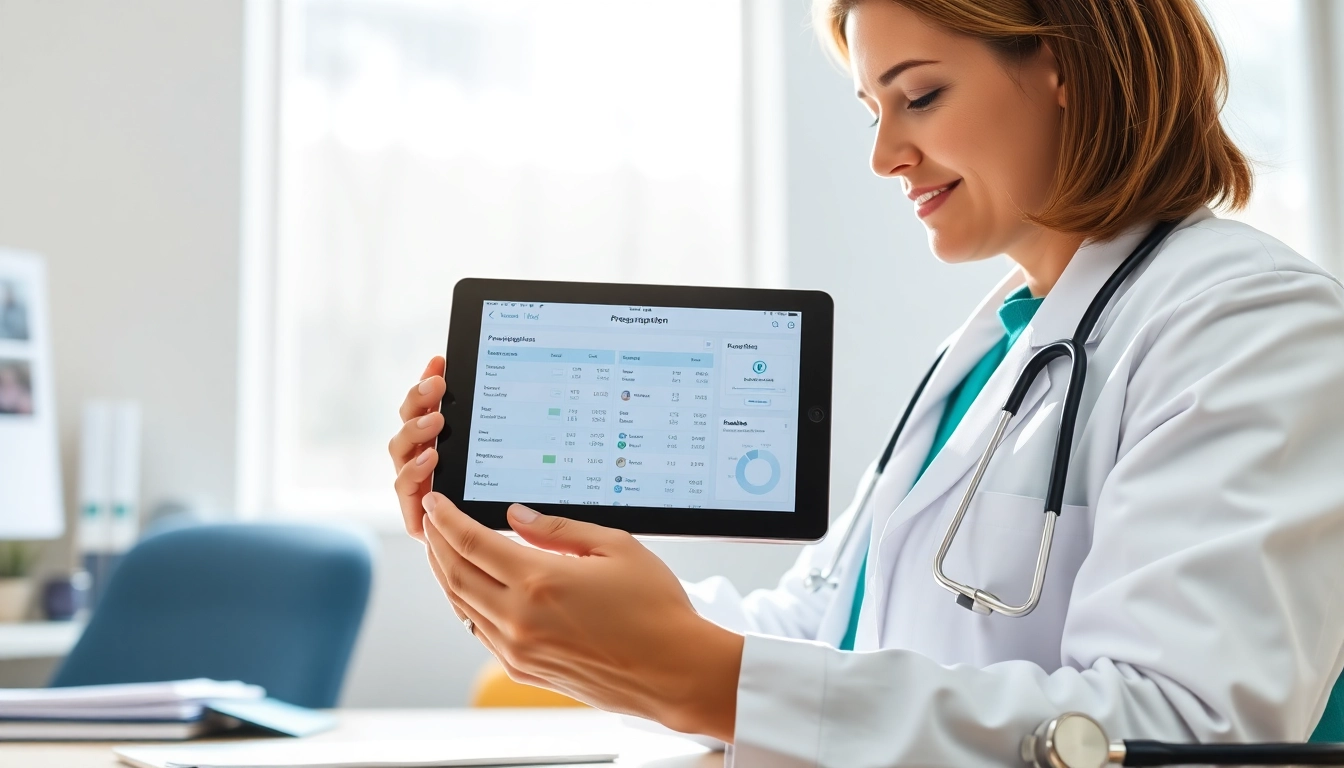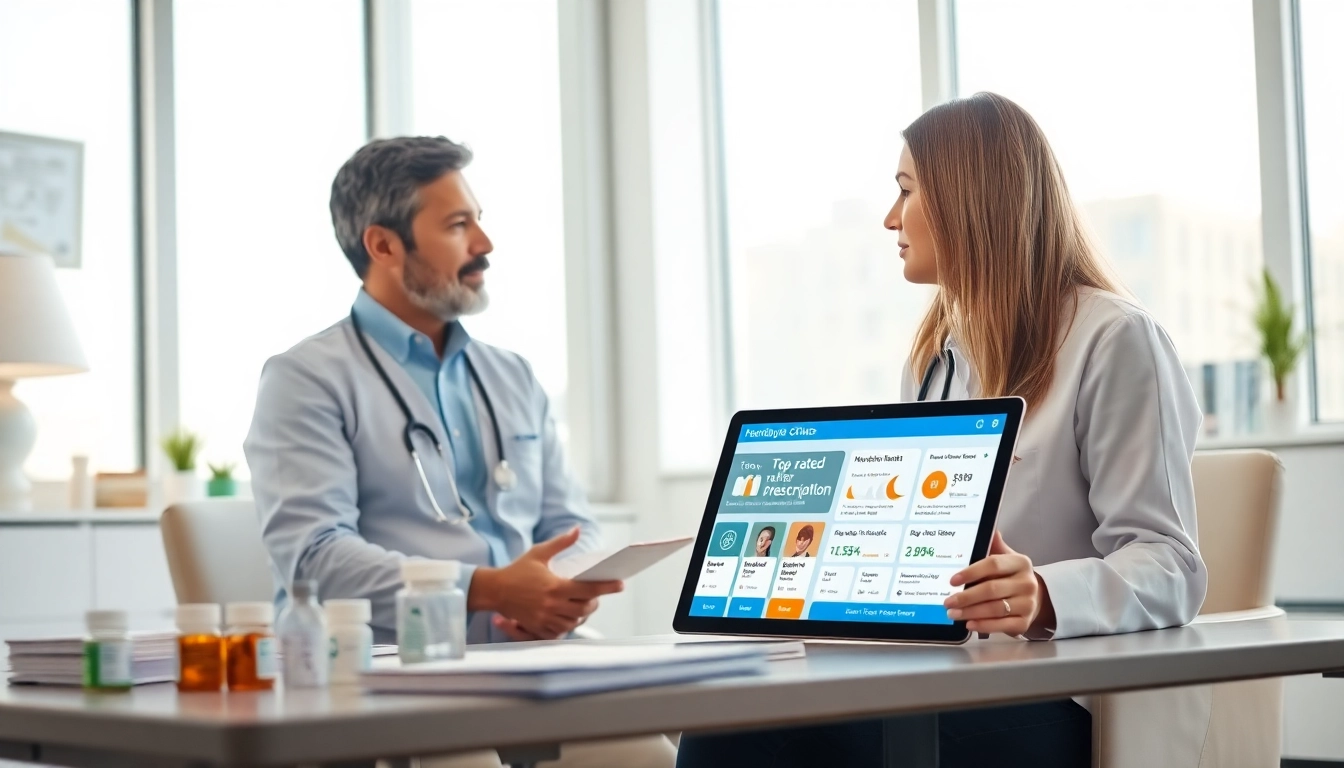Understanding E-Prescription Apps
What Are E-Prescription Apps?
E-prescription apps are digital tools designed to streamline the prescription process for healthcare providers. By allowing prescriptions to be created, managed, and transmitted electronically, these apps enhance the efficiency of patient care. Gone are the days of manually writing prescriptions on paper, which can lead to errors or lost documents. Instead, e-prescription apps enable medical professionals to send prescriptions directly to pharmacies, ensuring that patients receive their medications promptly and securely.
These applications encompass various features tailored for different healthcare settings, from individual practices to large hospitals. They not only assist in managing medications but also facilitate better communication among doctors, patients, and pharmacies. A thorough exploration of eprescription app reviews can offer insights into the various functionalities that make these apps indispensable in modern healthcare.
Key Features of E-Prescription Apps
- User-Friendly Interface: Most e-prescription apps boast clean, intuitive interfaces that simplify the prescribing process for healthcare providers. This versatility ensures that users of all tech skill levels can navigate the app with ease.
- Medication Database: A built-in, comprehensive medication database helps providers select the correct medications and dosages, reducing the risk of errors while also providing drug interaction alerts.
- Patient History Tracking: These apps often include functionalities for tracking patient prescriptions over time, which maintains a comprehensive medication history that can assist in clinical decision-making.
- Integrated Notifications: Notifications for prescription refills and alerts for potential medication interactions help healthcare providers keep track of patient care efficiently.
- Secure Communication: The ability to communicate securely with pharmacies and patients ensures that sensitive information remains protected while enabling swift communication.
- Analytics and Reporting: Many apps provide analytics features, allowing healthcare providers to track prescription habits and patient outcomes, which can inform improvements in care delivery.
Benefits of Using E-Prescription Apps
Adopting e-prescription apps presents numerous advantages for healthcare providers and patients alike:
- Improved Accuracy: E-prescribing reduces the chances of errors commonly associated with handwritten prescriptions, enhancing patient safety.
- Greater Efficiency: Automated workflows alleviate the administrative burdens on healthcare providers, allowing them to spend more time with patients instead of managing paperwork.
- Enhanced Patient Experience: Patients benefit from quicker access to their prescribed medications, leading to higher satisfaction levels.
- Better Compliance: E-prescription apps typically encourage adherence to treatment plans by notifying patients of refills and tracking medication compliance.
- Cost Savings: The transition to e-prescribing can lead to overall cost reductions in administrative expenses for healthcare practices.
Factors to Consider When Choosing an E-Prescription App
Pricing Models and Costs
When selecting an e-prescribing app, pricing is often a critical consideration. Different apps may use various pricing models, including subscription-based, per-prescription fees, or one-time purchase costs. Evaluating these pricing structures against the features offered is essential to determine the app that best fits a practice’s budget. Additionally, be aware of hidden costs such as training, ongoing support, or integration with existing systems.
User Experience and Accessibility
The user experience of an e-prescription app can greatly influence its adoption within a healthcare practice. Apps should be easy to navigate, with minimal learning curves for staff. Accessibility, including compatibility with mobile devices, can enhance usability, ensuring that healthcare providers can manage prescriptions on the go.
Integration with Other Systems
Integration capabilities with electronic health records (EHR) systems, billing software, and pharmacy networks are crucial. Seamless integration not only enhances workflow efficiency but also ensures that vital patient information is readily available to healthcare providers. This connectedness is essential in providing uninterrupted patient care.
Comparative Overview of Popular E-Prescription Apps
Technology Innovations in E-Prescribing
As technology continues to evolve, so do e-prescription apps. Innovations such as artificial intelligence and machine learning are being integrated into e-prescribing systems to improve decision support and predictive analyses. For example, advanced algorithms can analyze patient history to recommend suitable medications, enhance dosing accuracy, or even flag potential adverse reactions.
User Feedback and Experiences
User reviews provide invaluable insight into the practical application of e-prescription apps. Many healthcare providers share their experiences regarding usability, features, customer support, and integration challenges. Understanding these lived experiences can guide others in selecting an app that meets their specific needs while avoiding common pitfalls.
Performance Metrics and App Ratings
Performance metrics, such as stability, uptime, and user satisfaction ratings, are vital considerations. High ratings and positive reviews can indicate a well-functioning app that is likely to enhance your practice. Additionally, it’s important to monitor updates and enhancements made by developers to ensure the application keeps pace with technological advancements and regulatory changes.
Common Challenges Faced by Users of E-Prescription Apps
Technical Difficulties and App Errors
While beneficial, e-prescription apps are not without challenges. Technical difficulties such as system outages, bugs, or malfunctions can disrupt workflows and impact patient care. Regular updates, developer support, and robust IT infrastructure are essential to mitigate these issues.
Compliance and Regulatory Issues
Adhering to healthcare regulations, including the Health Insurance Portability and Accountability Act (HIPAA), is crucial in e-prescribing. E-prescription apps must be compliant to protect patient information and avoid legal implications. Healthcare providers should conduct thorough due diligence to ensure that the selected app meets all required regulatory standards.
Patient Data Security Concerns
As with any digital health solution, patient data security remains a top concern. The potential for data breaches and unauthorized access to sensitive patient information necessitates that e-prescription apps implement strong encryption, monitoring, and security features. Healthcare providers must prioritize patient confidentiality through the adoption of secure e-prescribing solutions.
Future Trends in E-Prescribing
Emerging Technologies in Healthcare
The future of e-prescribing is closely aligned with the advancement of technology in healthcare. Trends such as telemedicine, blockchain for secure data sharing, and advanced analytics are expected to reshape the e-prescribing landscape. These technologies will enhance interoperability, increase patient engagement, and lead to more personalized treatment plans.
Shifts in User Preferences
User preferences are gradually shifting toward apps that offer robust integrations, enhanced user experiences, and superior patient support. As healthcare continues to embrace patient-centered care, e-prescribing apps that prioritize the needs and preferences of both patients and providers will thrive. User feedback will play an increasingly important role in shaping app developments and features.
Anticipated Developments in E-Prescription Apps
Looking ahead, e-prescription apps are expected to evolve with increased functionalities, such as direct communication channels between healthcare providers and patients, integration with wearable health technology, and improved AI-driven patient engagement tools. These developments will not only optimize the prescribing process but also foster stronger relationships between patients and healthcare providers.













Leave a Reply